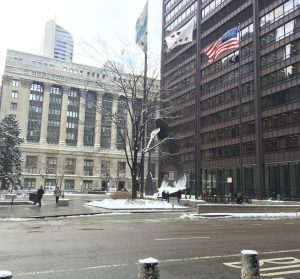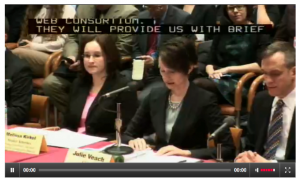Here is a challenge for your block club or neighborhood association. How walkable is your neighborhood? A new website, walkscore.com talks about the advantages of having a walkable neighborhood, and if you have car and have been buying gas lately, you probably don't need any further reasons, though there are several of them. You can read how they measure walkability (bottom line, what is within 2 miles of an address, as the crow flies) and put your own address in and see your score. According to the NYTimes' Max Roosevelt , some uptown neighborhoods in New York City get a perfect 100 rating.
Even Wilmette, a suburb on the Northshore, got a 68/100 rating, which is "somewhat walkable" according to the site. While the site is not perfect, this would be an excellent tool and resource for any block club or civic to use to analyze its own walkability. Imagine being able to approach the alderman at one of his or her monthly meetings with a map of where stores, libraries, restaurants are in your area — or where your area is missing important community assets like a grocery store or health clinic. The site describes what you should be able to walk to in your 'hood, including:
- A center: Walkable neighborhoods have a discernable center, whether it's a shopping district, a main street, or a public space.
- Density: The neighborhood is compact enough for local businesses to flourish and for public transportation to run frequently.
- Mixed income, mixed use: Housing is provided for everyone who works in the neighborhood: young and old, singles and families, rich and poor. Businesses and residences are located near each other.
- Parks and public space: There are plenty of public places to gather and play.
- Pedestrian-centric design: Buildings are placed close to the street to cater to foot traffic, with parking lots relegated to the back.
- Nearby schools and workplaces: Schools and workplaces are close enough that most residents can walk from their homes.
The streets belong to the people because people pay the taxes, but also because the city needs to be a community that serves its residents. The description of "complete streets," roads designed for everyone – including bicyclists, pedestrians of all ages and abilities, and people getting on and off transit vehicles provides your community group with a checklist you can use to see what your neighborhood has and what you need. A list like this is something an alderman would love, because it is concrete and tied to ideas that "Streets and San's" engineers can relate to. There is often money available to cities for improving access and traffic patterns to reduce accidents.
- Accessible: There are wheelchair ramps, plenty of benches with shade, sidewalks on all streets, etc.
- Well-connected: Streets form a connected grid that improves traffic by providing many routes to any destination.
- Built for the right speed: Lanes are narrow or traffic calming is in place to control speed.
- Comfortable: Pedestrian medians at intersections, count-down crosswalk timers, bicycle lanes, protected bus shelters, etc. make the street work better
Is your community having a housing and real estate bust? Identifying how walkable your neighborhood is, and using that as a "selling point" to buyers who can cut down on fuel costs because they can walk or bike to do their shopping and other business could help individual homeowners, but also could give your whole neighborhood a boost. If you worked with an alderman to promote more than one neighborhood in a ward for walkability, the whole ward could benefit as "Most Walkable."
From Walking In Your Neighborhood: It's Not Just a Mild Workout by Alan Durning, Sightline Institute
Compact, walkable communities—the opposite of poorly planned sprawl—are the solution to some of our biggest shared challenges, from childhood obesity to social isolation, from crash deaths to disappearing farmland, from the high price of gas to the architectural blight of strip development.
Sprawling Wilkes, Portland. Walk Score 38
They're even one of our most powerful weapons against climate change—they conserve fossil fuels like nobody's business. (It takes effort to burn gasoline when everything is so close to your front door.)
But the main reason to love walkable neighborhoods is their human energy: they're fun, lively, memorable… not boring. They're the kinds of places where you might bump into a long-lost friend; stumble across creative inspiration, whether for a song or a new business; or meet the love of your life. (That's why they're becoming among the most sought-after addresses around.)
Add your comments and we can get some discussion going around walking. I think this applies to biking and safety when riding, too. What do you think?
Categories:
At Home City Life Citywide Civic Associations & Community Groups Eco & Environment Local Politics New Story North Side Northwest Side Planning & Development Public Social Issues Transportation West Side
Tags:
transporation walkability






Be First to Comment